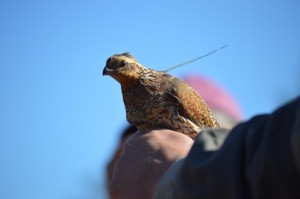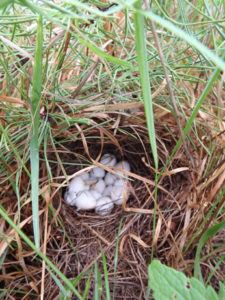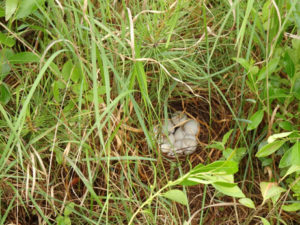Back in March, New Jersey Audubon, in conjunction with quail project partners the University of Delaware, Tall Timbers, Pine Creek Forestry, and the NJ Division of Fish and Wildlife, released another 80 translocated bobwhite quail on our Sim Place property. We mentioned then that this additional year on the project has a slightly different focus:
This year’s release has a particular focus on population survival and breeding dynamics in a concentrated area. Unlike previous years of the study (2015-2017), where translocated birds were split into coveys and spread out over the 14,000-acre study site and tracked, all 2018 translocated birds were released in one area to help “boost” the population density in a concentrated area of optimal habitat. This area of optimal habitat has supported quail and their offspring from prior years, releasing all birds into a focal area produces a higher density of birds. That higher density of birds should help overall survival by increasing covey size, mating opportunities, nesting and hatching.
“We are pleased with the preliminary results of the study,” said John Parke, Stewardship Project Director of New Jersey Audubon. “But we are very curious how this release will influence the bird’s overall survival and breeding, considering the higher quail density in an area that continues to support Bobwhite from previous releases and the offspring of those translocated birds.”
The latest phase of this project seems to be right on track, as so far this month the team has found at least three nests.
But the best update of all came yesterday:
“The first Bobwhite Quail nests of the season hatched today at the Pine Island Cranberry study site,” John says. “A total of 29 new chicks successfully fledged the nests! Both parents will care for the young until their first flight which occurs 14-16 days after hatching. Quail chicks, about the size of a bumblebee when hatched, are dependent on insects and good habitat to survive until the fall. Once the insects disappear, the birds begin to feed on seeds.”
We look forward to further updates on the new babies as well as the remaining nest!
*Nest photos courtesy of John Parke



